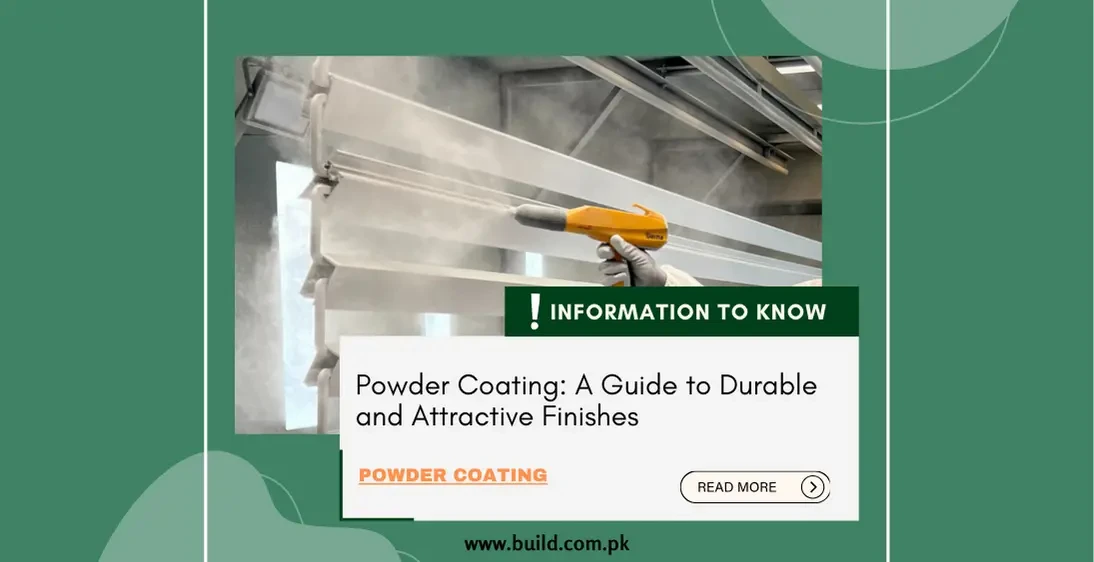Powder Coating: A Guide to Durable and Attractive Finishes

Introduction:
Powder
coating has revolutionized the finishing industry by providing a high-quality,
durable, and environmentally friendly alternative to traditional paint. This
versatile coating process is used on a wide range of products, from household
appliances and automotive parts to industrial machinery and outdoor furniture.
In this comprehensive guide, we will delve into the details of powder coating,
exploring its benefits, types, application process, and maintenance. Whether
you are considering powder coating for a DIY project or industrial application,
this guide will provide you with all the information you need.
Understanding Powder Coating:
Powder
coating is a dry finishing process that involves the application of a powdered
material to a surface. Unlike liquid paint, which relies on a solvent to keep
the binder and filler parts in a liquid suspension, powder coating is applied
as a free-flowing, dry powder. The powder can be made of various materials,
including epoxy, polyester, and acrylic, and is typically applied electrostatically
and then cured under heat to form a hard, durable layer.
Benefits of Powder Coating
Durability:
Powder-coated surfaces are highly resistant to chipping, scratching, fading,
and wear compared to other finishes. This makes powder coating ideal for
products that are subjected to harsh conditions or frequent use.
Environmental Friendliness:
Powder coating emits virtually no volatile organic compounds
(VOCs), making it an environmentally friendly alternative to traditional
solvent-based paints. Additionally, any overspray can be collected and reused,
reducing waste.
Variety of Finishes:
Powder coating offers a wide range of finishes, including smooth,
textured, matte, and glossy. It also comes in a vast array of colors, allowing
for customizable aesthetics.
Efficiency:
The powder coating process is efficient and cost-effective. It typically requires
fewer coats to achieve the desired thickness, reducing application time and
material usage.
Uniform Application:
The electrostatic application ensures even coating coverage,
reducing the risk of drips, runs, and uneven finishes that are common with liquid
paint.
Types of Powder Coating
Powder
coatings are generally categorized into two main types based on the type of
resin used:
Thermoplastic Powder Coatings:
These coatings do not undergo any chemical changes during the
curing process. They can be melted and reformed, making them highly recyclable.
Common thermoplastic powders include nylon, PVC, and polyester.
Thermoset Powder Coatings:
These coatings undergo a chemical reaction during the curing
process, creating a hard, permanent finish. Once cured, thermoset powders
cannot be melted and reformed. Epoxy, polyester, and hybrid (epoxy-polyester)
powders are common thermoset coatings.
Powder Coating Process
The
powder coating process involves several key steps to ensure a durable and
high-quality finish:
Surface Preparation:
Proper surface preparation is crucial for achieving good adhesion
and finish quality. This typically involves cleaning the substrate to remove
dirt, grease, and other contaminants. Methods such as sandblasting, chemical
etching, and degreasing are commonly used.
Application:
The powder is applied to the prepared surface using an electrostatic spray gun.
The gun imparts an electrostatic charge to the powder particles, which are
attracted to the grounded workpiece, ensuring even coverage.
Curing:
After application,the coated workpiece is moved to a curing oven, where it is heated to a temperature that causes the powder to melt and flow, forming a continuous film. For thermoset powders, this also initiates the chemical cross-linking reaction that creates a hard, durable finish.
Cooling:
Once the curing process is complete, the coated workpiece is allowed to cool
and harden. The result is a tough, protective coating that is ready for use.
Maintenance and Care
Powder-coated
surfaces require minimal maintenance, but proper care can help extend their
lifespan and maintain their appearance:
Regular Cleaning:
Clean powder-coated surfaces regularly with a mild detergent and
water. Avoid using abrasive cleaners, as they can scratch the finish. A soft
cloth or sponge is typically sufficient for most cleaning tasks.
Avoid Harsh Chemicals:
Do not use harsh chemicals, solvents, or aggressive cleaning
agents, as these can damage the powder coating. Stick to pH-neutral cleaners to
maintain the integrity of the finish.
Inspect for Damage:
Periodically inspect powder-coated surfaces for signs of damage,
such as chips or scratches. Addressing these issues promptly can prevent
further deterioration and protect the underlying material.
Touch-Ups:
Minor damage can often be repaired with touch-up paint specifically designed
for powder-coated surfaces. For larger areas of damage, it may be necessary to
reapply powder coating.
Applications of Powder Coating
Powder
coating is used across various industries due to its durability, versatility,
and aesthetic appeal. Some common applications include:
- Automotive: Powder coating is widely used for automotive parts, including wheels, frames, and other components. It provides excellent resistance to road salt, chemicals, and abrasions.
- Architectural: Architectural elements such as window frames, railings, and fencing often utilize powder coating for its weather resistance and color retention.
- Industrial Equipment: Machinery and industrial equipment benefit from powder coating's durability and protection against corrosion and wear.
- Home Appliances: Many home appliances, such as washing machines, refrigerators, and microwaves, feature powder-coated finishes that withstand daily use and enhance appearance.
- Outdoor
Furniture: Powder coating is ideal for outdoor furniture due to its resistance
to UV rays, moisture, and temperature fluctuations.
Conclusion:
Powder coating is an advanced finishing process that offers numerous benefits, including exceptional durability, environmental friendliness, and a variety of aesthetic options. Whether for industrial, automotive, architectural, or personal projects, powder coating provides a high-quality finish that stands the test of time. By understanding the types, process, maintenance, and applications of powder coating, you can make informed decisions and achieve the best results for your needs. Whether you're looking to enhance the appearance of your products or protect them from the elements, powder coating is a reliable and versatile solution.









